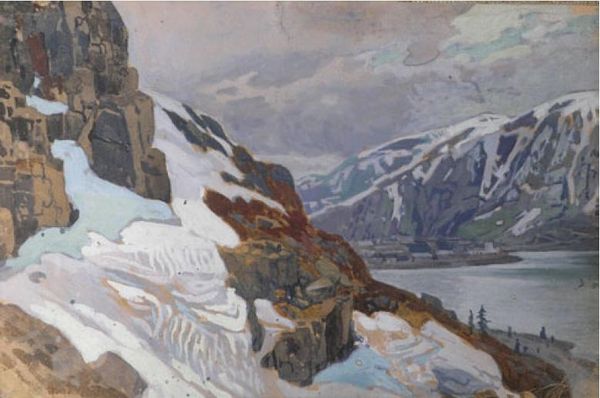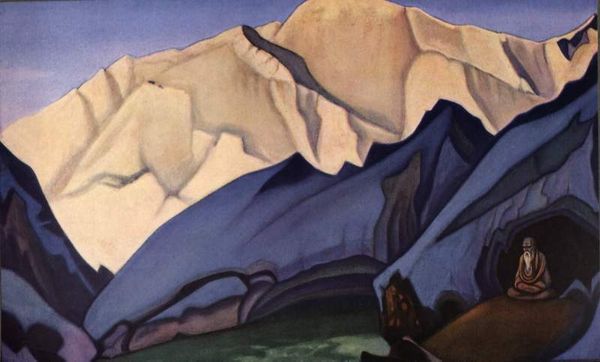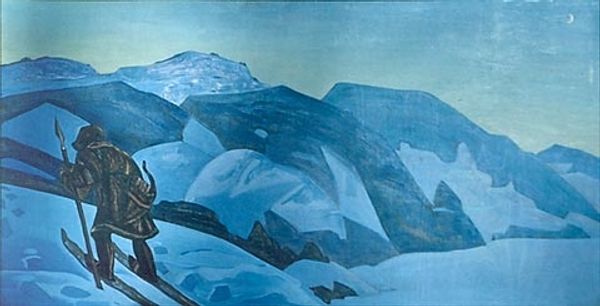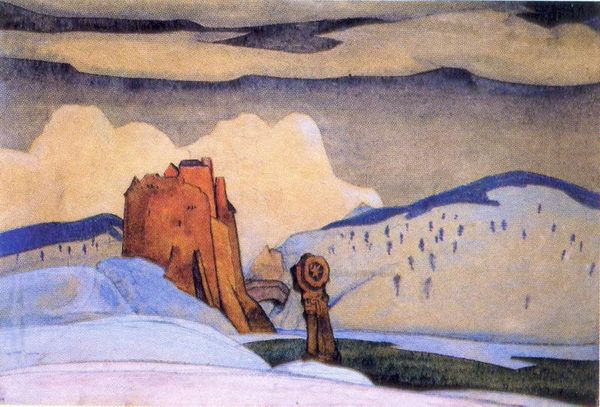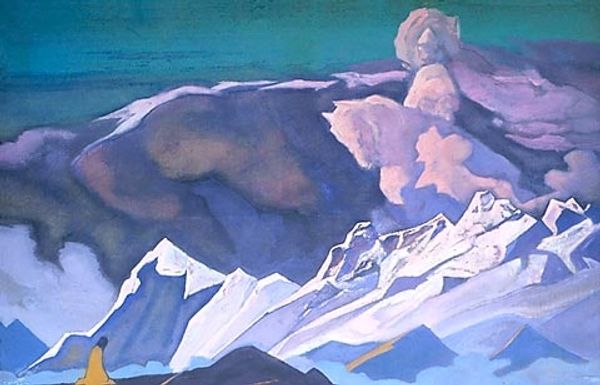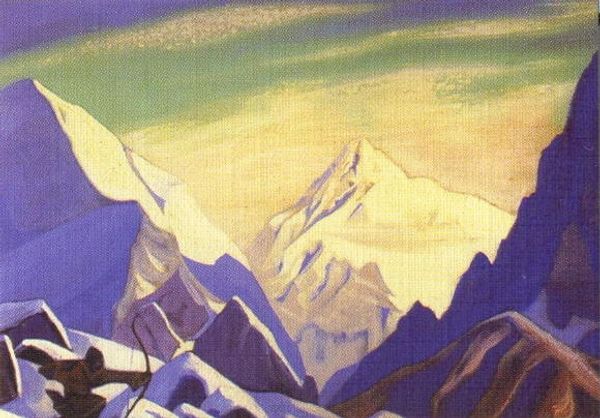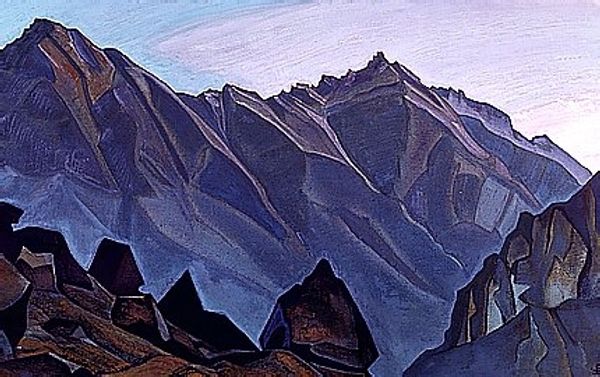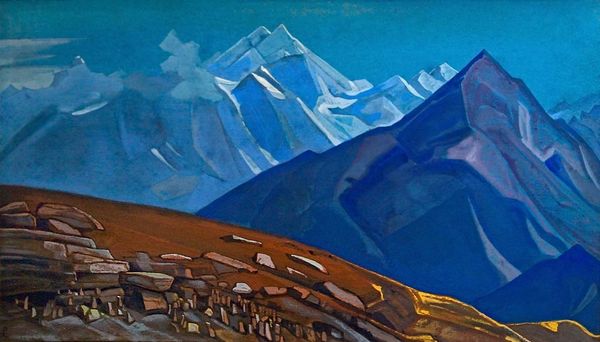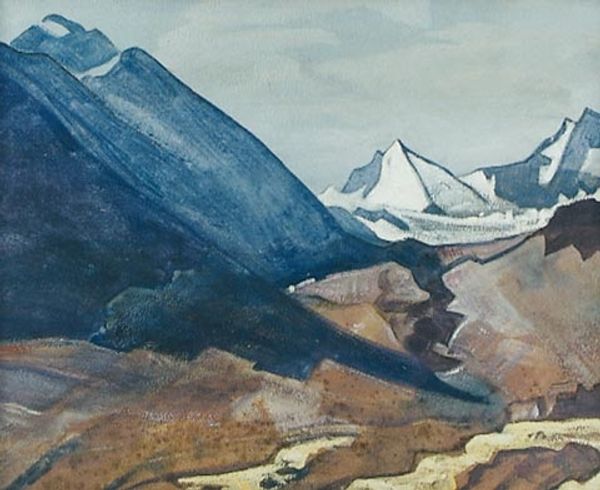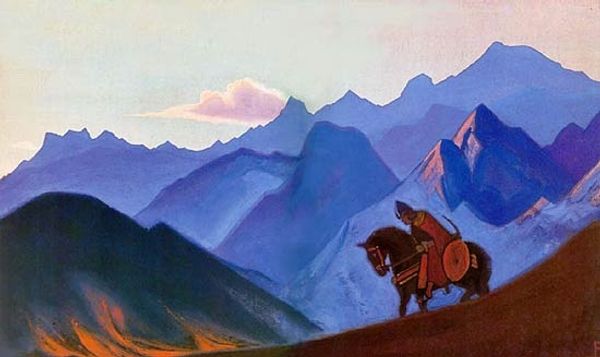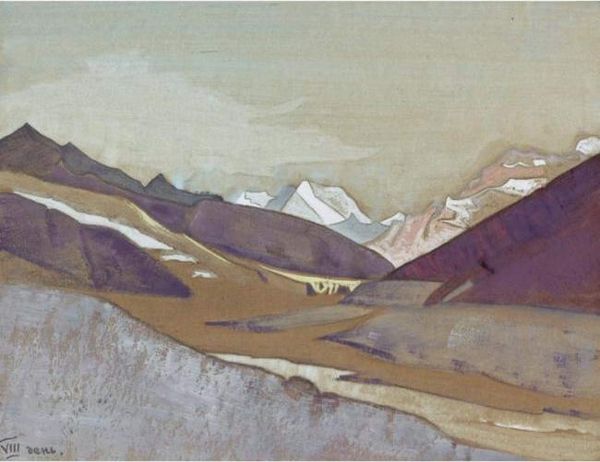
painting, oil-paint
#
painting
#
oil-paint
#
landscape
#
impressionist landscape
#
possibly oil pastel
#
oil painting
#
modernism
#
realism
Copyright: Public domain
Curator: Welcome. We're standing before J. E. H. MacDonald's oil painting, "Mountain Snowfall, Lake Oesa," completed in 1932. Editor: A bracing scene! It feels simultaneously solid and ephemeral, with those weighted rocks in the foreground contrasting the snowfall across the lake. There’s a kind of restrained energy, wouldn’t you say? Curator: Precisely. MacDonald has used visible brushstrokes, laid on with an almost mathematical precision, which capture the weight of the snow. The compositional elements—the triangular peak against the oval of the lake—are working beautifully here, it feels highly organised. Editor: Interesting. And what of its historical placement, considering MacDonald's role within the Group of Seven and Canadian landscape painting at this time? Did he exhibit work of this type extensively? Curator: MacDonald aimed to establish a uniquely Canadian visual language. While he certainly depicted similar mountain settings, this particular composition signals a subtle departure. We see him pushing beyond direct representation towards a simplified abstraction of forms. It resonates within wider modernist impulses during the period, to explore pure shapes as the focus. Editor: That’s an intriguing aspect. The public response during this era would likely have seen it within debates surrounding nationhood, correct? As in: what represents Canada? Curator: Indeed. Landscape painting became a vehicle for constructing and contesting national identity. Paintings like these, featured at pivotal shows, would become vital public symbols, as interpretations of the Canadian experience, and the relationship between Canadians and the land were played out in civic debate. Editor: Looking closely, one also cannot avoid noting the dots suggesting snowflakes... the painting surface becomes active, yet somehow stays calming... I think it offers today the same possibilities for inward reflection and consideration about Canadian identity. Curator: I agree. The carefully considered interplay of geometric form and painterly expression, allows us to access the beauty within. Editor: A contemplative and socially resonant landscape... Curator: ...indeed, a perfect culmination of structure, form, and cultural context.
Comments
No comments
Be the first to comment and join the conversation on the ultimate creative platform.

